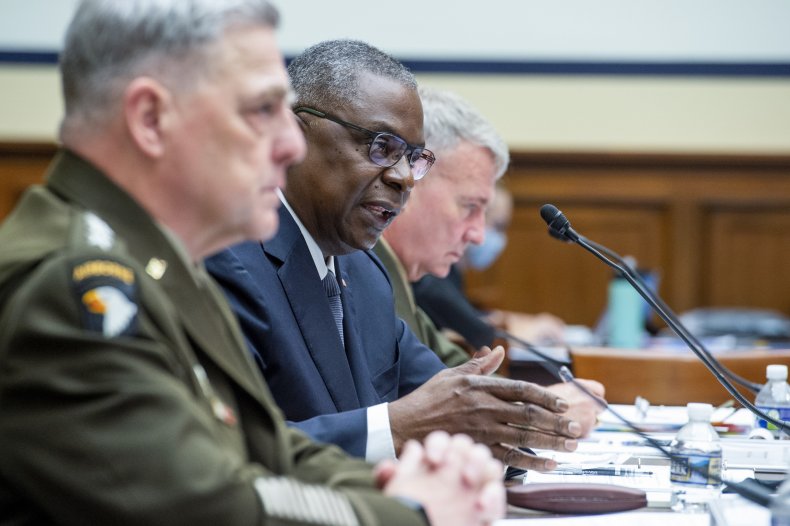At Least 2,000 Firearms Stolen From Military During 2010s, Congress Wants New Rules
Congress is pushing for more accountability for military weapons after an Associated Press investigation found that at least 2,000 firearms from the military were stolen during the 2010s and were later used in crimes.
Under Congress' proposal, the Department of Defense would require lawmakers and civilian law enforcement to be more educated on how weapons are being stolen from military armories, warehouses and shipments.
Military officials have acknowledged the issues in interviews, and General Mark Milley, chairman of the Joint Chiefs of Staff, told senators in June that he would seek a "systematic fix," regardless of what Congress did, to solve the problems with how the military keeps track of weapons. Spokespeople for the Marines and Army have said their branches will be making changes for better tracking.
Senate and House lawmakers have responded to the issues by writing stricter accountability into the National Defense Authorization Act and, in coming weeks, will compare each chamber's version of the act and reach conclusions of any differences before the legislation heads to President Joe Biden's desk.
Congress has requested a progress briefing by November 19, when spokespeople for the Army, Air Force and Marines would respond directly to a committee.
In recent years, as guns continued to disappear, the Department of Defense stopped informing Congress of most of the thefts, according to an investigation that found the large number of grenades, pistols, assault rifles and other weapons that were being used in crimes across the country.
For more reporting from the Associated Press, see below.

"We are concerned that DOD has seemingly not yet developed a coherent strategy to improve its ability to account for military weapons and equipment," Democratic leaders on the House Committee on Oversight and Reform wrote to Defense Secretary Lloyd Austin and the leaders of the service branches in a letter dated Monday.
The letter also focused on a technology that some units of the Air Force and Army have used to track guns, but that could let even low-tech enemies detect U.S. troops.
When embedded in military guns, thin radio frequency identification tags—RFID, as the technology is known—can streamline weapon counts and distribution. But field testing for AP showed that, outside armories, the electronic signals the tags emit could become an unwanted tracking beacon from distances greater than some armed services seemed to realize.
The Office of the Secretary of Defense called the tracking potential for enemies a significant security problem, and under questioning, the Navy told AP it would abandon the technology in weapons. Still, RFID tags are used in many aspects of military logistics and lawmakers on the committee asked the Pentagon to detail how widely the technology is deployed and to explain the security risks those uses bring.

